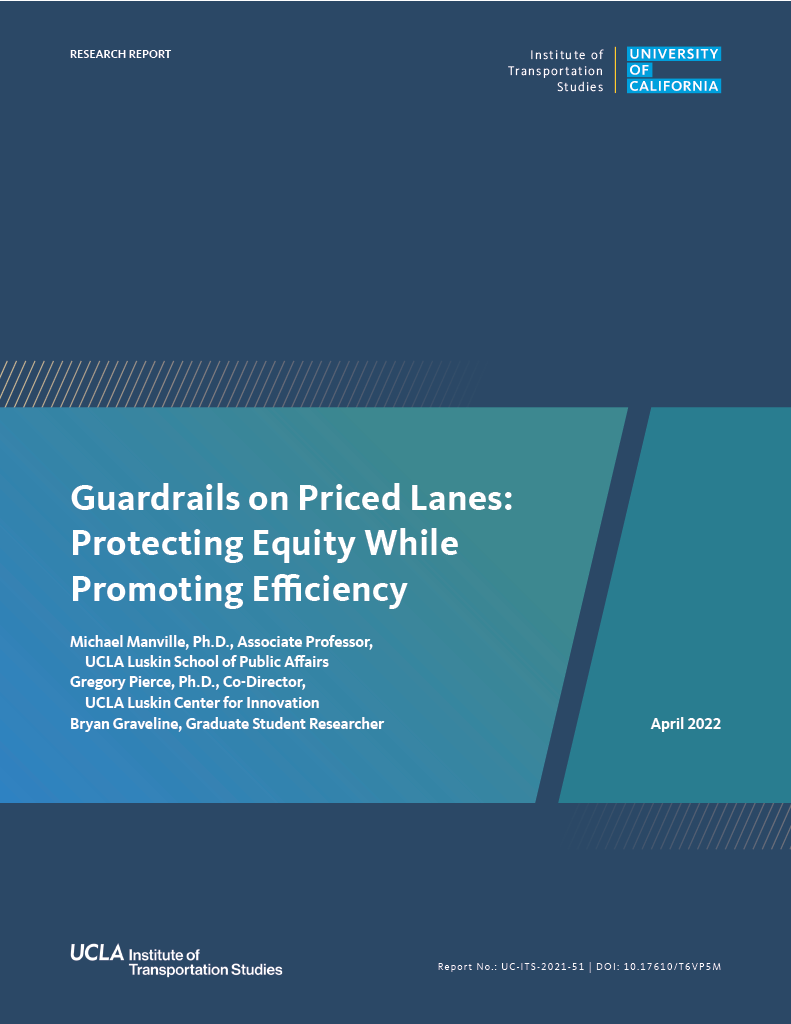Date: April 20, 2022
Author(s): Michael Manville, Gregory Pierce, Bryan Graveline
Abstract
Can congestion pricing be implemented in a way that protects vulnerable residents of California? This report examines that question from two perspectives. First, we empirically estimate the size of the vulnerable population likely to be impacted if congestion pricing were introduced on California’s urban freeways. Our estimates suggest that 13% of households, as a result of their low incomes and current travel habits, might be unduly burdened by a freeway tolling program in California. Second, we consider ways to mitigate these burdens. In particular, we compare freeway use to use of other metered network infrastructure, like electricity grids or water systems. We suggest that assistance programs from these utilities provide a useful model for protecting low-income drivers from road prices, and further note that policymakers would be less constrained in progressively redistributing congestion toll revenue than they would be in redistributing utility revenue.
About the Project
The project’s ultimate goal is threefold. First, we will deliver a broad but accurate and relevant snapshot of vulnerable travelers in California. Second, we will use that information to carefully consider how different forms of congestion pricing might improve or degrade equity. Third and most important, we will use lessons from other safety net programs, and particularly those operating in the utility industry in California, to propose specific safeguards for poor and marginalized populations that can be built into congestion charging programs. We examine the fairness implications of congestion pricing and propose policy mechanisms to mitigate its potential unfair outcomes. Our project first empirically establishes the broad contours of travel by vulnerable populations in California’s major metropolitan areas. We then examine particular forms of congestion charging, and evaluate how they might affect equity. Finally and most importantly, we draw on models of the guardrails instituted by other public utilities to illustrate ways to have congestion pricing while still protecting low-income travelers.


